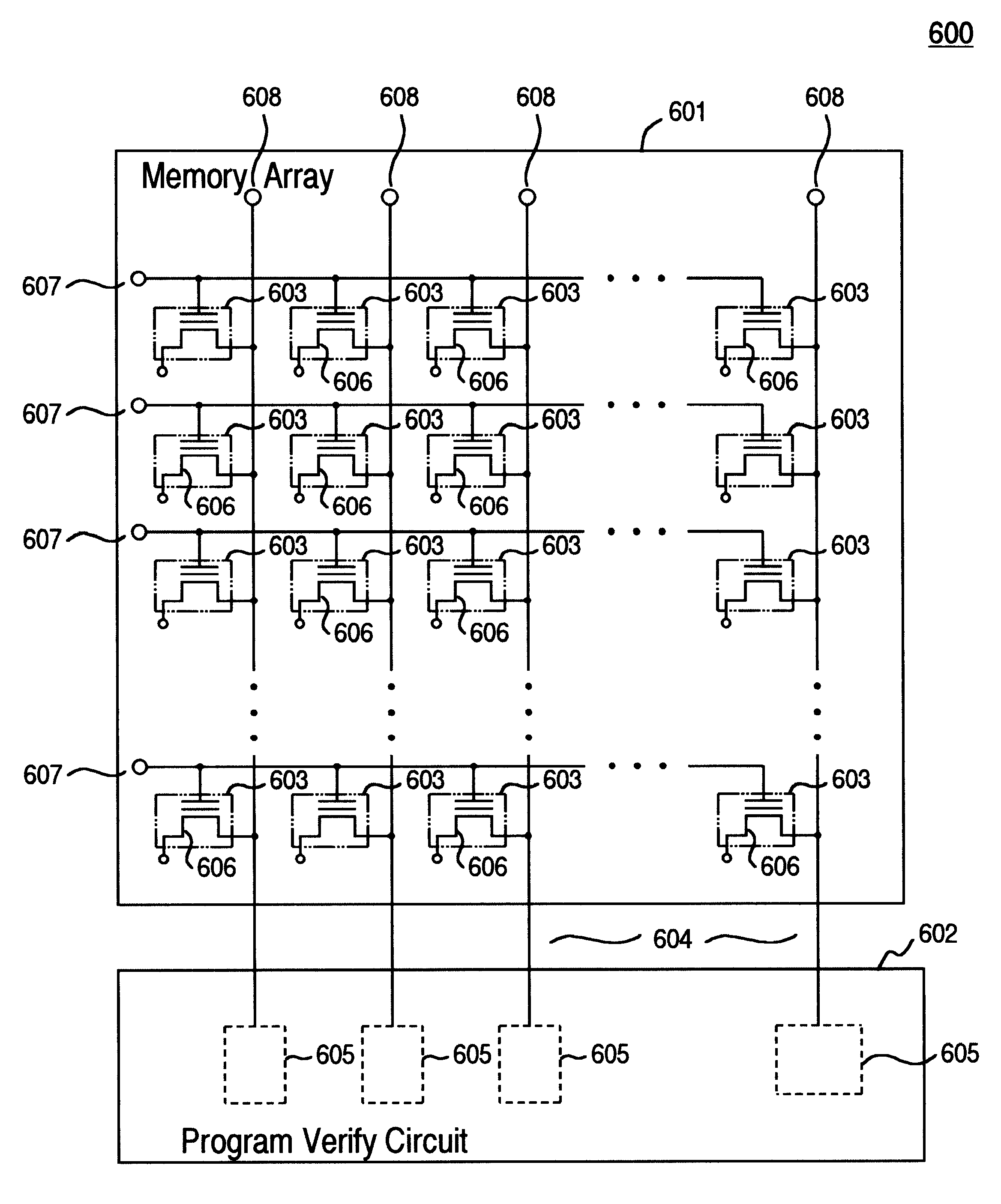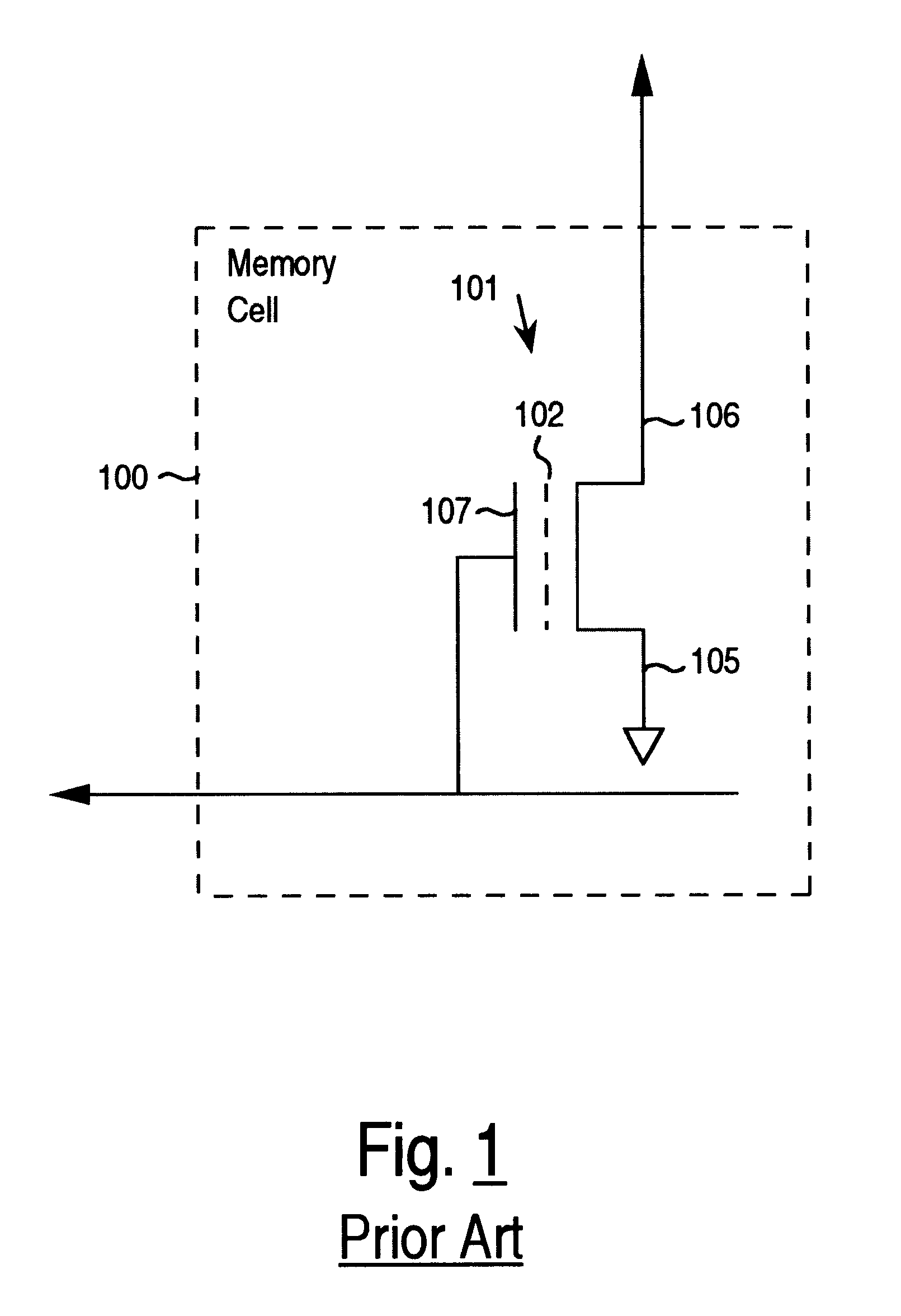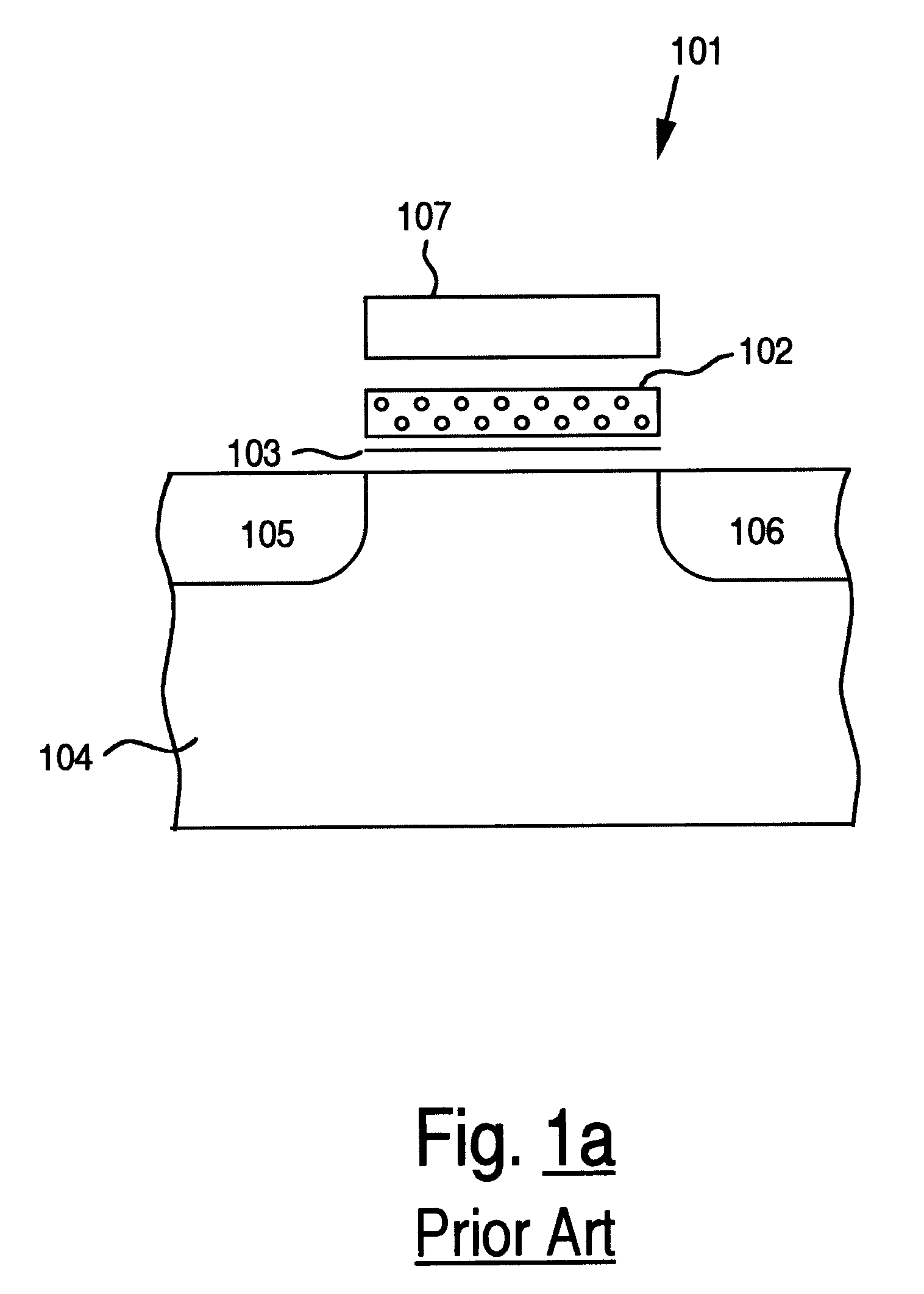Staircase program verify for multi-level cell flash memory designs
a multi-level cell, flash memory technology, applied in static storage, digital storage, instruments, etc., can solve the problems of inability to reprogramme in practical matter, data stored in such memory devices are susceptible to power loss, and require constant ambient power, so as to achieve the effect of increasing the performance of program verification
- Summary
- Abstract
- Description
- Claims
- Application Information
AI Technical Summary
Benefits of technology
Problems solved by technology
Method used
Image
Examples
Embodiment Construction
Hereinafter embodiments of the present invention will be explained with reference to the accompanying figures.
The illustrated embodiments provide system for program-verifying a multi-level-cell semiconductor memory device, commonly called a MLC flash memory device. An MLC flash memory device typically comprises an array of memory cells each having at least one storage element therein, the storage element configured to be programmed to store an N-bit combination of logical data, where N.gtoreq.2. The storage element, typically a transistor with a programmable threshold voltage V.sub.t, is configured to store the N-bit combination of logical data by programming the storage element to any one of 2.sup.N data storage levels. To ensure accurate programming of data in the memory array and to inhibit a properly programmed memory cell from subsequent programming, the data stored therein is program-verified. The principles of the present invention provide a system for reducing the time to pr...
PUM
 Login to View More
Login to View More Abstract
Description
Claims
Application Information
 Login to View More
Login to View More - R&D
- Intellectual Property
- Life Sciences
- Materials
- Tech Scout
- Unparalleled Data Quality
- Higher Quality Content
- 60% Fewer Hallucinations
Browse by: Latest US Patents, China's latest patents, Technical Efficacy Thesaurus, Application Domain, Technology Topic, Popular Technical Reports.
© 2025 PatSnap. All rights reserved.Legal|Privacy policy|Modern Slavery Act Transparency Statement|Sitemap|About US| Contact US: help@patsnap.com



